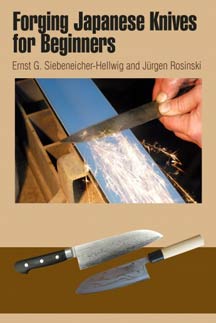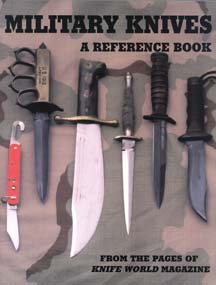- You cannot add "The London Knife Book, an A-Z Guide to London Cutlers by Ron Flook" to the cart because the product is out of stock.
Forging Japanese Knives for Beginners by Siebeneicher-Hellwig and Rosinski
$24.95
This book shows how to make a tanto (dagger) and a hocho (chef’s knife) start-to-finish, using traditional Japanese forging techniques. Spiral bound, 195 full color photos, 128 pp.
Description
This book shows how to make a tanto (dagger) and a hocho (chef’s knife) start-to-finish, using traditional Japanese forging techniques.
Publisher’s description:
Learn how to make two types of Japanese knives: a tanto (dagger) and a hocho (chef’s knife) following traditional techniques. With step-by-step images and clear instructions, this how-to guide covers acquiring iron ore, building and using a bloomery furnace, forging the blades, fitting the blades with handles, and sharpening the blades with water stones. The process is further detailed with images that illustrate the structure of the blade and diagrams showing the construction of each knife. In addition, a history of these legendary blades, methods for determining carbon content, and tips on caring for the completed blades are included. This is an ideal bladesmithing book for intermediate to expert level metalworkers.
BOOK REVIEW
reviewed by Knife World Staff
The latest release in Schiffer’s series of books on knifemaking and related subjects, Forging Japanese Knives for Beginners, addresses a subject that has not received a great deal of coverage to date. Translated from German like the other books in the series, it boasts the same high quality photography, diagrams and excellent writing we’ve come to expect.
This volume begins a few steps earlier than any of the earlier books, with an explanation of how to find iron ore, construct a bloomery, smelt the ore, and forge it together into a solid mass to produce the equivalent of traditional Japanese tamahagane steel.
From this point, one can progress forward as if the steel had been obtained elsewhere. Progressively the process of building a traditional Japanese tanto is shown, from forging to finishing. Setting this apart from other books on the forged knife is that it includes a detailed explanation of how to differentially harden the blade using a clay tempering process, and shows the reader how to make all of the tanto’s fittings, the habaki (blade ferrule), tsuba (guard), and handle. The handle itself consists of a mekugi (pin), menuki (decorative metal device), and the handle itself which in this example is made from wood. (A traditional silk wrapped handle can also be made, but is not explained here.)
The making of a traditional Japanese hocho kitchen knife with a laminated blade is similarly shown step-by-step. This type of blade does not require differential heat treatment. After constructing a simple handle, the sharpening process is explained.
This book covers a lot of material in its 120 pages, but it does so quite effectively. For those seeking an introduction to the making of traditional Japanese knives, Forging Japanese Knives for Beginners is highly recommended.
Spiral bound, 195 full color photos, 128 pp.





Reviews
There are no reviews yet.